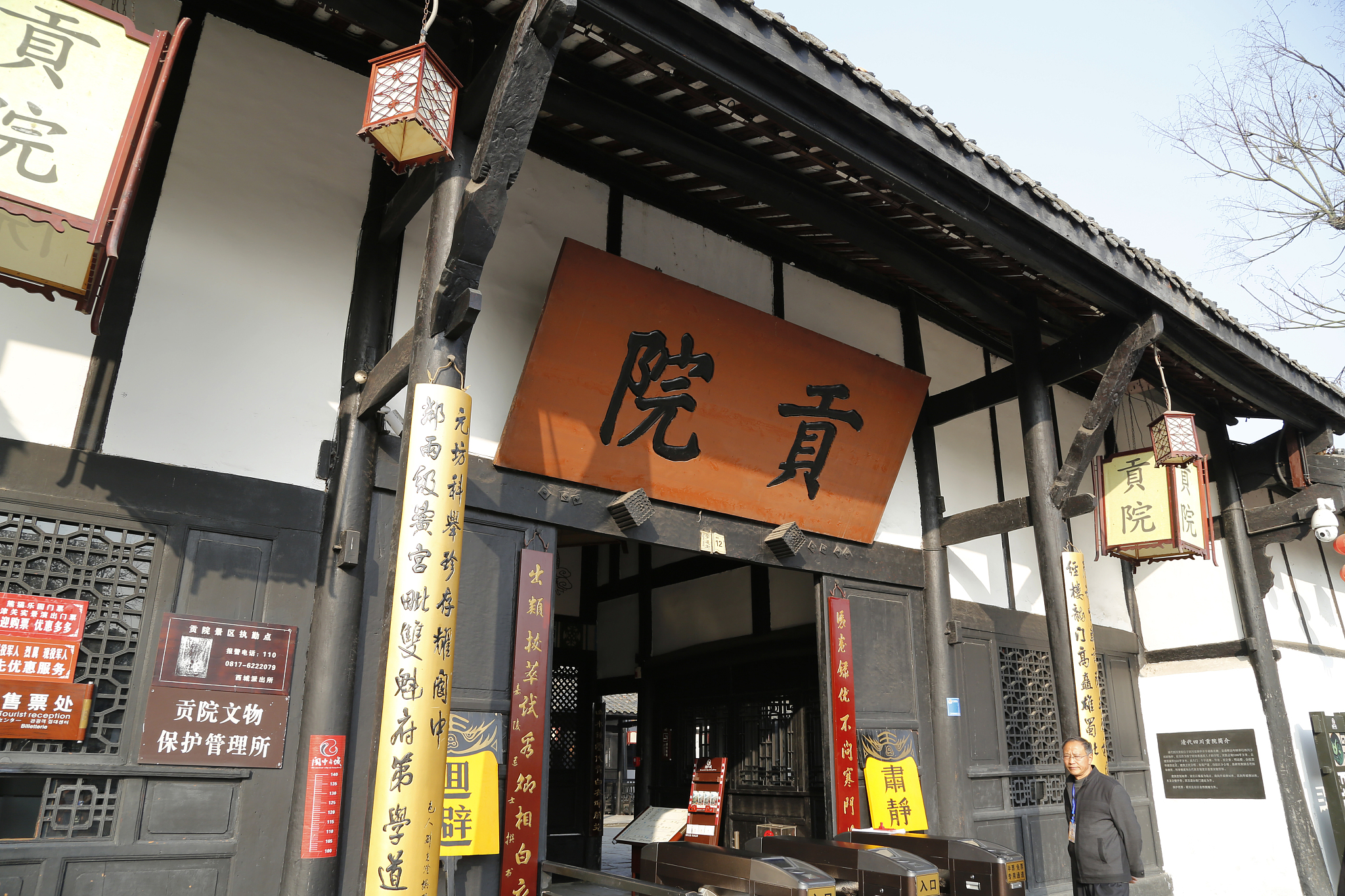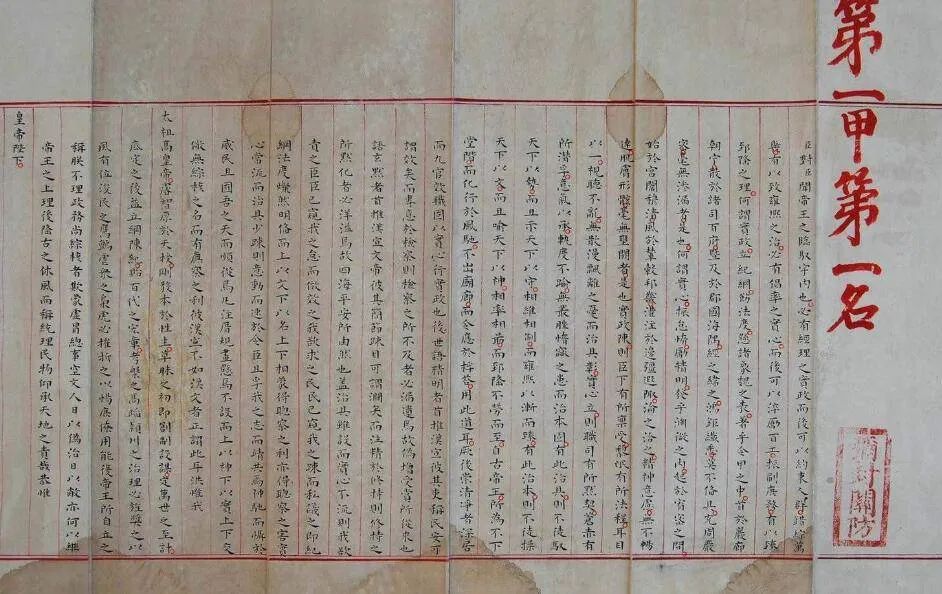
Students line up outside an examination center in Yuping Dong Autonomous County, Guizhou Province, southwest China, June 7, 2023. /CFP
Students line up outside an examination center in Yuping Dong Autonomous County, Guizhou Province, southwest China, June 7, 2023. /CFP
For high school students across China, two days in June mark a pivotal moment in their lives. It is when the annual national college entrance examination, commonly known as gaokao, occurs.
On June 7 this year, a record-breaking number of high school students entered examination halls to take the gaokao. This examination is regarded as the fairest means of talent selection in China.
Until about a century ago, a talent selection test known as the Keju System had been used to identify and recruit individuals with intellectual prowess and moral character. This examination endured for 1,300 years, from its establishment during the Sui Dynasty in 605 AD to its abolition in the late Qing Dynasty in 1905.
"The Keju System was highly regarded and widely accepted in Chinese society for its objective and fair nature, a characteristic that it shares with the gaokao today," said Guo Peigui, vice president of the Chinese Society on Ming Dynasty History.
While the gaokao and the Keju System share an ancestral connection, their specific purposes are different, Guo told CGTN.
The Keju System focused on selecting government officials, requiring intellectuals to undergo multi-tier examinations. In contrast, today's college entrance examination serves as a means for admitting students into colleges, he said.

A photo of a historical site known as a gongyuan that served as an examination compound for candidates participating in the imperial exam in Langzhong City, Sichuan Province, China, January 16, 2015. /CFP
A photo of a historical site known as a gongyuan that served as an examination compound for candidates participating in the imperial exam in Langzhong City, Sichuan Province, China, January 16, 2015. /CFP
The evolution of the Keju System
The imperial examination took place once every three years and involved a demanding evaluation process. Candidates underwent a series of rigorous tests, starting from the local level and progressing to the highest in the imperial capital.
The examination has four levels: the county examination, the provincial examination, the academy examination and the palace examination. Successful completion of the lower-level examination was a prerequisite for qualifying to participate in the next examination.
The candidates who participated in the county examination were referred to as tongsheng. Those who successfully passed this examination were honored with the title of Xiucai. Similarly, individuals who passed the provincial, academy and palace examinations were respectively called Juren, Gongshi and Jinshi.
Among the Jinshi, the top three scorers were given special rankings: Zhuangyuan, Bangyan, and Tanhua, in order of achievement. The emperor granted all Jinshi official positions, and their names were engraved on tablets as a mark of distinction.
According to Guo, the development of the Keju System primarily focused on ensuring and enhancing the objectivity and fairness of the examination process.
For instance, during the Tang Dynasty (618-907 AD), measures were taken to inspect examinees and prevent them from bringing any materials related to the exam. In the Song Dynasty (960-1279 AD), the examination process extended beyond the test takers themselves to include the search and inspection of the examiners as well.
During the Ming Dynasty (1368–1644). a specific group of individuals had the important task of meticulously transcribing each candidate's complete written work using red pens. Additionally, examiners used cyan pens to make corrections on the test papers. This process was implemented to ensure the test papers were not tampered with or edited.
According to Guo, examinations are more appealing to the public when they are conducted with fairness, thereby encouraging greater participation.
Preferential policies were also implemented to support underdeveloped frontier areas. Beginning with the Song Dynasty, candidates from regions with limited economic and cultural advancement were offered separate exams with simpler questions and more lenient grading standards. In the Ming Dynasty, the allocation of admission slots to these areas was increased.
"These preferential policies played a crucial role in fostering the advancement of culture and education in remote regions," said Guo, adding that they bolstered people's trust in the imperial court, which helped to strengthen unity.

A photo of an examination paper written by Zhao Bingzhong, a candidate who won the first place in the palace examination in the Ming Dynasty (1368–1644). It is the only authentic copy by Zhuangyuan in the palace examination that is preserved at present, Qingzhou City, Shandong, China. /The Qingzhou Museum
A photo of an examination paper written by Zhao Bingzhong, a candidate who won the first place in the palace examination in the Ming Dynasty (1368–1644). It is the only authentic copy by Zhuangyuan in the palace examination that is preserved at present, Qingzhou City, Shandong, China. /The Qingzhou Museum
The Keju System's important role in Chinese society
The Keju System allowed individuals from modest origins to elevate their social standing. By achieving success in the examinations, they could secure esteemed government positions and rise above their social circumstances based on merit rather than inherited privilege.
As a result, the system facilitated social mobility by reducing the impact of family background and other factors. Through their hard work and success in the exams, individuals from the lower strata of society could ascend to become officials and transition into the upper class.
According to Guo's research, 43.34 percent of the 16,000 Jinshi during the Ming Dynasty hailed from families without any prior official lineage in the preceding three generations – father, grandfather or great-grandfather. This percentage was even higher during the early Ming Dynasty, surpassing 70 percent.
The Keju System played a vital role in enhancing the cultural competence of the middle and upper-level officials in the imperial court. This improvement had significant benefits, as it bolstered the cohesion of the court and contributed to overall social stability.
The influence of the Keju System extended far beyond the examination halls. In order to excel in the rigorous examinations, aspiring scholars were required to study diligently, leading to the establishment of private academies and increased demand for educational resources, Guo said.